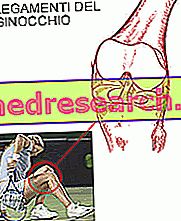
What is Cerezyme?
Cerezyme is a powder used to prepare a solution for infusion (drip into a vein). It contains the active substance imiglucerase.
What is Cerezyme used for?
Cerezyme is used for the long-term treatment of patients with Gaucher disease. Gaucher disease is a rare hereditary disease characterized by the lack of an enzyme called glucocerebrosidase, which normally decomposes a waste lipid product called glucocerebroside. Without this enzyme the lipid glucocerebroside accumulates in the body, generally in the liver, spleen and bone marrow, triggering the symptoms of the disease: anemia (low levels of red blood cells), fatigue, tendency to ecchymosis and bleeding, enlargement spleen and liver, bone pain and fractures.
Cerezyme is indicated in patients with type 1 Gaucher disease, which does not affect nerve cells, or type 3, which affects nerve cells for long periods. Patients must have symptoms that do not affect the nervous system, including one or more of the following conditions:
- anemia;
- thrombocytopenia (low blood platelet count);
- bone problems;
- enlargement of the liver or spleen.
The medicine can only be obtained with a prescription.
How is Cerezyme used?
Patients suffering from Gaucher disease must be treated by doctors experienced in the treatment of this disease. Cerezyme is normally given as an infusion every two weeks. The dose and frequency of infusions should be adjusted for each patient based on symptoms and response to treatment. The first infusions should be administered slowly and then the infusion rate may be increased under the supervision of a doctor or nurse. Cerezyme is indicated for long-term use.
How does Cerezyme work?
In the past, Gaucher disease was treated with the use of an enzyme called alglucerase, which was prepared from human placenta. Imiglucerase, the active ingredient of Cerezyme, is a copy of this enzyme, which is produced by a method known as "recombinant DNA technology": the enzyme is produced by a cell in which a gene has been inserted (DNA) which makes it capable of producing the enzyme. Imiglucerase replaces the enzyme that is missing in Gauche disease and promotes the decomposition of glucocerebroside, preventing its accumulation in the body.
What studies have been carried out on Cerezyme?
For type 1 Gaucher disease, Cerezyme has been studied in three studies involving a total of 40 patients, an acceptable number considering that the disease is very rare. These studies compared the ability of Cerezyme and that of alglucerase to control the symptoms of Gaucher disease, evaluating the increase in the number of red blood cells and platelets in the blood and the decrease in the volume of liver and spleen. For type 3 Gaucher disease, which is extremely rare, the company presented data from published articles and a special registry of patients with Gaucher disease.
What benefit has Cerezyme shown during the studies?
Studies have shown that Cerezyme is as safe and effective as alglucerase in controlling the symptoms of Gaucher disease. It has also been shown that patients can safely switch from treatment with alglucerase to treatment with Cerezyme.
What is the risk associated with Cerezyme?
The most common side effects of Cerezyme (seen in between 1 and 10 patients in 100) are respiratory symptoms (difficulty breathing), hives (rash) or angioedema (subcutaneous swelling), itching and skin rash. Patients can develop antibodies (proteins produced by the body as a reaction to Cerezyme, which can compromise treatment) and must be monitored during the first year of therapy to detect any signs of allergic reactions to Cerezyme.
Cerezyme should be used with caution in subjects who may be hypersensitive (allergic) to imiglucerase or to any of the excipients.
Why has Cerezyme been approved?
The Committee for Medicinal Products for Human Use (CHMP) decided that Cerezyme effectively controls the symptoms of type 1 and type 3 Gaucher disease. The committee decided that Cerezyme's benefits outweigh its risks such as long-term enzyme replacement therapy in patients with a confirmed diagnosis of non-neuropathic Gaucher disease (Type 1) or chronic neuropathic (Type 3), who also show significant non-neurological clinical manifestations of the disease. The Committee recommended that Cerezyme be given marketing authorization.
More information on Cerezyme:
On 17 November 1997, the European Commission granted Cenzyme Europe BV a marketing authorization for Cerezyme, valid throughout the European Union. The marketing authorization was renewed on November 17, 2002 and November 17, 2007.
The full EPAR for Cerezyme can be found here.
Last update of this summary: 06-2009



